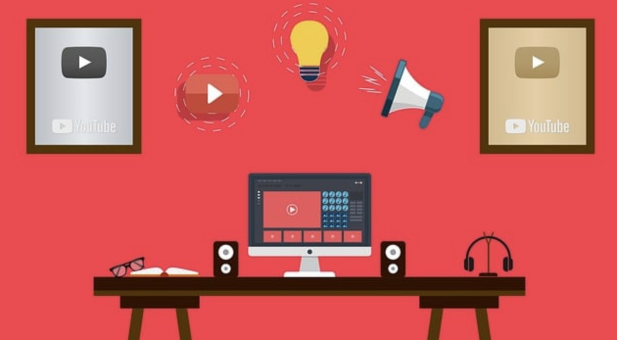Teaching with a Wide Range of Digital Texts
By Jason D. DeHart
 In this fourth post in a series exploring what digital literacy means for instruction with middle school students, I note the possibilities of including a wide range of digital texts to support instruction. I also continue to explore some changing trends in engagement among my students.
In this fourth post in a series exploring what digital literacy means for instruction with middle school students, I note the possibilities of including a wide range of digital texts to support instruction. I also continue to explore some changing trends in engagement among my students.
Playlists
From 2007 to now, music (a digital text) has been a mainstay for my classroom practice. Many of my students enjoy working with music playing in the background, and I have used lyrics and music videos to highlight a number of concepts.
This could be something as time-intensive as exploring lyrics and noting poetic techniques, to my recent use of Lizzo’s song “Pink” to underscore symbolism in The Great Gatsby. When it comes to literary concepts like mood and tone, music is a rich source. Even parody songs, as noted by one teacher in my dissertation study, can be brought in to help students explore content from a different stance.
While my students might be patient enough to spend some brief moments in Walt Whitman’a work and “Tyger, Tyger” by William Blake, the effect of a modern voice in lyrics is hard to match. There is a further sense of relatability as students note that they are already engaged in narrative work as they deconstruct what songs mean on the way to school each day.
The Visual
As a teacher in a 2007-2008 classroom that only had two computers – rather large machines that were covered in dust and roared with energy as they attempted to cool down – the use of images was relegated to magazine clippings and drawings. These days when I introduce a new concept or vocabulary word, I have a stock of countless visuals that I can bring on board.
This could be something as quick as an image of a particular object from a story that is unfamiliar to my students, to an exercise in “meme-cabulary,” as students locate or create memes related to new words we are learning.
When exploring a cultural or literary set of events, my students can readily find images of authors and books, moving beyond the traditional introduction to a story that many textbooks would feature in my years as a student.
Though I regularly celebrate the use of comics, I also note that the world of the visual is much wider, and my students engage with this world of their own free will without my prompting.
Film
I recall the moment when a television (equipped with a video player) was rolled in on a cart at school. The screen would display loud static, and then slowly a moving image would come into view. The use of film in the classroom was so pivotal for me that I even explored this topic in my dissertation.
For the most part, when we watched film – movie or documentary – it filled most of our classroom time. I have noticed a different trend in the past few years.
I do not know if it is the streaming phenomenon that has so steadily risen since the beginning of the pandemic or the presence of brief media in social apps, but my conclusion is that less is more. Showing an entire film in one sitting has always been a point of contention, and media scholar Renee Hobbs has written about how this approach has been widely used for reward days and little else.
From a student engagement perspective, I am convinced that – in 2024 – close, intentional use of particular aspects of film to teach particular aspects of content is the go-to method for this medium. The ease and access with which a well-chosen clip from YouTube can introduce or underscore a lesson or build some brief background knowledge is a joy in my teaching.
Video
It might seem like I just covered this one, but there is a slightly different aspect of the moving image in this final section. Through the pandemic I discovered the joy of creating brief videos with iMovie for my students in online classes. These brief glimpses into life and work were often two or three minutes, and were used to convey a particular point or two.
That approach has not gone away as I have begun work with students in-person again.
Want to teach MLA? Why not create a video of yourself explaining and going through a simple process of using Google docs to form these tricky elements of composition? Instead of repeating the mechanical steps of the process multiple times, posting a video like this in an online learning management system can be a go-to resource for students who missed one or two steps the first time.
If you are like me, you also enjoy when students surprise you by responding in interesting ways to assignments. By using a video format, which can be edited with software like WeVideo, teachers are creating a mentor text for their students, and we can invite them to respond in kind.
There are so many tools to explore and a wealth of digital texts at our disposal. Being a reader and writer now means making or using tools that have not been available in quite the same way or to the same extent before. In my final post I’ll explore more details about film, video, and the moving image.
Dr. Jason D. DeHart teaches English at Wilkes Central High School in Wilkesboro, North Carolina. He taught English Language Arts to middle grades students in Cleveland, Tennessee for eight years, earned his doctorate, and served as an assistant professor of reading education at Appalachian State University before returning to his first love, the secondary classroom.
Jason’s work has appeared in Edutopia, SIGNAL Journal, English Journal, The Social Studies, and the NCTE Blog. See all of Jason’s MiddleWeb posts here – including a 3-part series with teacher and school librarian Jennifer Sniadecki on using picture books with middle level readers. His website Book Love: Dr. J. Reads offers book reviews and author interviews.
Video editing image by Alexandra_Koch from Pixabay
Teacher’s video image by Mudassar Iqbal from Pixabay






























